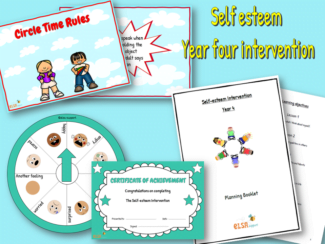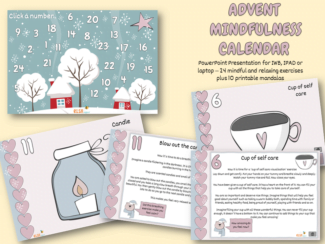Mind Monsters Display and Resource Pack – Item 139
This Mind Monsters Display and Resource pack has been created by my daughter (Alexandra May Designs). You can find her on Instagram. She is an all round creative with a passion for dogs! All the Monsters have been created by her and put together in this delightful display and resource pack.
Included in the pack
6 Monster Character posters
There are six monsters in the pack with key vocabulary. There is a monster for each basic emotion- happy, sad, angry, scared, surprised and disgusted. Each monster is a character. We have:
- Angry Adam
- Disgusted Doug
- Happy Hannah
- Sad Simon
- Scared Sophie
- Surprised Sam
Each character is displayed on one page which can then be printed as A3 or A4 to create your display. The character is asking ‘How do you feel today?’ Alongside the monster is some key vocabulary. It is so important for children to learn other emotion words too so they can express their feelings.
6 Monster character cards
There are also some smaller cards (2 per page) which you can print as A4 or A3 depending on how big you want your cards to be. Each monster is holding a card for the child to write or draw on. The idea is that the child can choose which monster they feel like. They can then write or draw why they feel like that.
7 Banners
There are also 7 banners to choose from. Each one having a different colour so you can choose the colour you would like to use. These are in PDF format so to print as a banner you will need to change the settings. Everyone’s printer is different so it is difficult to give instructions but on my computer I choose poster print, and reduce the percentage to 75%. This prints over 3 pages which you can then stick together to form your banner. Obviously you could print it bigger or smaller by changing your settings.
6 emotion cards
Each character on a separate card. (4 per page).
Writing paper for each character (write your own title/question)
Drawing paper for each character (write your own title/question)
Speech bubble, thinking bubble and comic strip
****Download a free poetry book with a poem for each character by clicking the following link.
Mind Monsters poetry book
This is a display and resource pack but it doesn’t stop just at displays. These cards could be used as a teaching tool too:
- You could do a circle time each week concentrating on one character. All emotions work could be on that one character for the week.
- Children could have a go at creating their own characters for each emotion. Use the drawing paper included in the pack.
- Write your own scenarios on the monster cards to help children relate to the emotion.
- Make up stories of why ‘Doug is disgusted’ or ‘Adam is angry’. Use the writing paper included in the pack.
- Draw comic strips showing why ‘Sophie is scared’. (A comic strip is included in the pack).
- Use to model emotional regulation. Tell the children ‘I feel like Angry Adam today because…’ What should I do about that? How can I calm down?
- Help children to label an emotion by helping them understand how they are feeling. For example if you see a child is feeling sad then say ‘Oh I can see you are feeling sad like ‘Sad Simon’. Is that because you are missing your mummy? What can we do to make you feel better?’
- Sometimes children have mixed emotions. What would a character look like that was a mixture of ‘Angry Adam and ‘Scared Sophie’? Draw it or describe it!
- Help children to understand their physical reactions to different emotions. How does ‘Angry Adam’ feel in his body? Does he have a fast heart beat? Is he breathing fast?
- What thoughts make a child feel the way they do? What might ‘Surprised Sam’ be thinking about? Use the thinking bubble (included) and either model the writing or give the child a thinking bubble to write what they think ‘Surprised Sam’ is thinking about.
- What might each character be saying? Use the speech bubble (included) and either model the writing or give the child the speech bubble to write what they think each character is saying.
- Can they think of any other words to describe the feelings of each character. There are some on the display posters but can they think of anymore?
- At circle-time can each child come up with an emotion (that is NOT one of the characters) and then decide which character that emotion belongs to. They can write on a post it note and stick underneath it.
- Ask each child to choose a character from the board (or print enough of the smaller emotion cards for each child to be given a card) but they must not tell anyone which one they have chosen. Ask the child to act out the emotion. Can anyone guess which emotion they have chosen.
- Ask each child to copy the emotion face of each character. Pass a mirror around the circle. Can they make their face look like ‘Happy Hannah’? or ‘Sad Simon’?
- Print two copies of the emotion cards and play a pairs game.
- Print several copies of the emotion cards and children can stick under the correct poster (visual matching).
- Children can use the emotion cards or the small monster cards as an emotional register. They can choose how they feel and stick it under the correct monster. They could write their name on the small monster cards if they wish.
- Print a set of the emotion cards. Turn over each card and name the emotion.
- Give the child a set of emotion cards and ask them to make the faces with play-dough.
- Lay out 6 hoops with an emotion card in each one. Make up some scenarios and ask the child to put a teddy (or you could have a stuffed monster) in the correct hoop.
- Sort the emotion cards between positive and negative emotions.
- Play a version of ‘Go fish’. Print off 4 copies of each card. Deal out 4 cards to each player, put the rest in a stack in the middle (the pond). The child has to ask if anyone has got a ‘sad’ face? If they have they give it to the child who must tell you a time they felt like that. They can then put the pair together and put it face down in front of them. If no one has a card then they ‘go fish’ and pick a card from the stack. If it matches then they have to tell a time that they felt like that, if not then they keep the card. The first person to get rid of all their cards is the winner.
- If you have a stuffed monster (or a teddy), pick an emotion card and ask the child why the monster might feel that way.
Other Resources you will love!
Self-esteem intervention Year Four – Item 145
The Self-esteem intervention Year Four is for a group of six children and is led by a teaching assistant. It covers emotions, relaxation, calming down…
£4.50
Christmas Advent Mindfulness Calendar – Item 404
This is a PowerPoint version of our Christmas Advent Mindfulness Calendar. You will need PowerPoint to use this resource. You can use on an IWB,…
£3.50
‘I did something’ Motivational Stickers – Item 3302
These are our 'I did something' Motivational Stickers. We provide them on easy to use flat A4 sheets. Each sheet contains 35 identical circular stickers,…
£7.99












